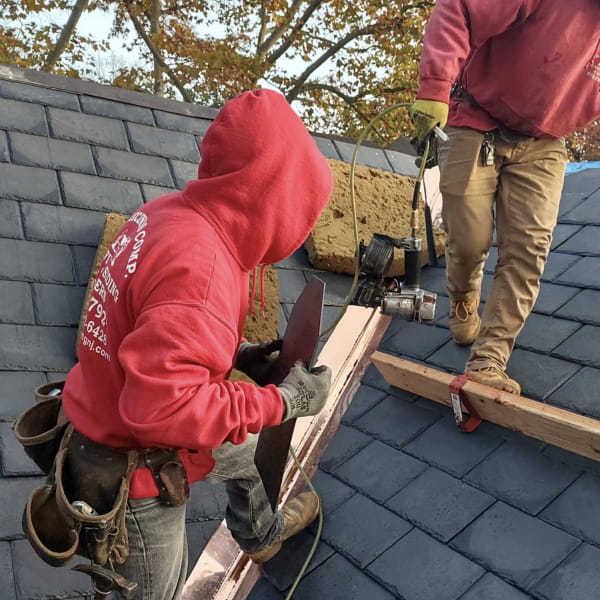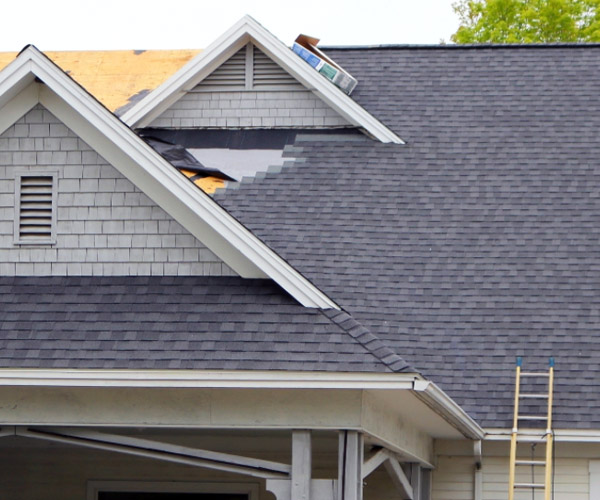Exactly How to Review Different Roofing Alternatives for Your Structure Requirements
Reviewing roofing choices for your building needs a detailed approach that takes into consideration various factors such as the planned usage of the structure, regional environment conditions, and material qualities - Toledo Roofer. It is essential to evaluate the advantages and downsides of various roofing kinds, from asphalt tiles to steel and clay tiles, while also factoring in initial expenses and long-term maintenance.
Assessing Your Structure's Needs
To efficiently evaluate roofing options, begin by thoroughly evaluating your structure's needs. Beginning by taking into consideration the building's planned usage, as different frameworks may necessitate differing roof requirements. For example, household roofs often focus on looks and insulation, while business buildings might focus on durability and load-bearing capability.
Following, examine the neighborhood environment conditions that will certainly influence roof efficiency. Elements such as temperature level variations, precipitation degrees, and wind patterns can influence product selection and design. A roofing system that masters a temperate climate might not do also in areas vulnerable to hefty snowfall or extreme warmth.
Furthermore, examine the structural stability of your structure. Make certain that the existing structure can sustain the selected roofing materials, especially if thinking about heavier options. It is also essential to review any neighborhood building ordinance or regulations that may dictate certain needs for roof.

Contrasting Roof Materials
Once a thorough assessment of your structure's requirements has actually been completed, the next action entails contrasting numerous roofing products. Each material supplies unique advantages and disadvantages, making it necessary to align your selection with your certain needs and scenarios.
Asphalt roof shingles are widely recognized for their price and ease of installment, making them a preferred choice for residential structures. On the various other hand, metal roof covering, understood for its toughness and longevity, can stand up to harsh climate conditions yet may include a higher first financial investment.
Clay and concrete ceramic tiles provide outstanding thermal insulation and visual allure, especially for Mediterranean-style design, yet they call for a more robust architectural assistance as a result of their weight. Wood trembles deal an all-natural look and great insulation properties but might require extra upkeep and are susceptible to fire risks.
Assessing Cost and Spending Plan
Evaluating your roof covering options requires a cautious assessment of price and budget considerations. The general allocate a roof job makes up several elements, including product prices, labor expenditures, upkeep, and possible long-lasting cost savings. It is necessary to develop a clear budget before exploring particular roof materials, as this will certainly lead the decision-making process and aid you avoid overspending.
Begin by getting quotes from several specialists to understand labor prices in your region. Ensure that these price quotes include all essential services, such as elimination of the old roof, installment, and any additional functions, like insulation or air flow enhancements - Sylvania Roofing Contractor. Next off, assess the price of numerous roof covering products, taking into consideration both initial installation expenses and anticipated life expectancy

Understanding Energy Effectiveness
Power effectiveness plays a critical role in the choice of roof materials and systems, significantly affecting both energy usage and overall convenience within a building. A well-chosen roofing system can enhance thermal efficiency, decreasing the demand for home heating and cooling down systems, which consequently decreases power expenses and minimizes environmental influence.
When assessing roof options, take into consideration materials that mirror as opposed to soak up warm. Light-colored or reflective roofing products can substantially reduce roof surface temperatures, bring about reduced power usage throughout hot months. Additionally, appropriate insulation and air flow are necessary to enhance the energy effectiveness of the whole roof. Insulation protects against heat transfer, while air flow mitigates warmth build-up in the attic room room.
An additional crucial aspect is the roof system's longevity and maintenance requirements. Long lasting materials that need less frequent replacement contribute to long-lasting energy cost savings. The energy efficiency of a roofing system can additionally be evaluated through its conformity with well established sustainability navigate here scores such as ENERGY STAR or LEED.
Thinking About Aesthetic Allure
A roofing's visual appeal dramatically affects the total look try this web-site of a building, complementing its architectural design and boosting visual charm. Sylvania Roofing Contractor. When examining roof covering choices, it is necessary to consider how the chosen product, color, and style will harmonize with the existing framework and neighborhood. A well-designed roof covering can raise even the most basic of structures, transforming them right into aesthetic centerpieces
Various roof covering products use different visual qualities. Typical tiles might stimulate a traditional beauty, while metal roof can give a modern-day, sleek appearance. In addition, the color of the roofing material plays a critical role; lighter shades can make a structure appear even more sizable, while darker tones may develop a cozier atmosphere.
Moreover, architectural components, such as dormers and eaves, can enhance the roof covering's visual impact. It is advisable to speak with professional developers or designers to make certain the selected roof choice straightens with the overall design intent. Inevitably, a roofing system must not just give useful benefits yet likewise add favorably to the building's aesthetic, showing the owner's taste and the character of the surrounding atmosphere.
Conclusion
